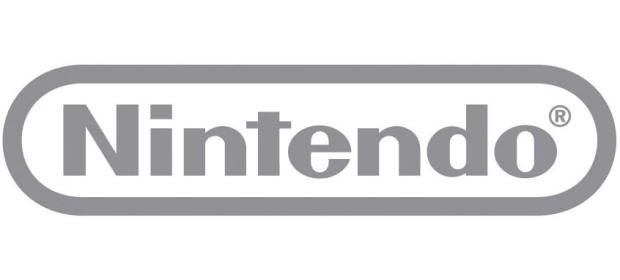It’s Friday, November 30th and Nintendo’s latest piece of hardware is now finally available for European gamers to go out and buy, despite having been available in North America for over a week now.
You’ll have read the reviews of some of the launch titles from us already, but the question we’ve been asked the most is: “Should I buy a Wii U?”, and let me tell you, there’s no easy answer to that one, folks.
For starters, it was really quite difficult to assess the console early on, because there was no online until the firmware rolled out. But in many ways, whilst some may see this a negative when experiencing the hardware, it actually felt like a chance to get down and dirty with the games themselves, because when all is said and done, playing those games is what we spend our time doing the most, right?
Before that though, let’s have a look at the console itself. There’s no questioning the Wii U in terms of aesthetics, it’s a deliciously pretty console to look at. Yes, the premium model is an absolute fingerprint magnet, but unless you’re the type of person who strokes and strums their console, that’s not an issue really. Smaller than the consoles it will sit alongside (Xbox 360, PlayStation 3) it looks the business. USB slots at the front and back, SD card slot too, there’s plenty of ways to plug things into the device. At the back, the first offence is made, as there is no optical out audio slot. It’s hard to stay mad at Nintendo though, because they actually bothered to bundle a HDMI cable in the box, and there are solutions for people who still have an amp with optical audio slots, and haven’t upgraded to one with HDMI ports. So, a bit of tinkering, and the use of a TV’s optical out going into the amp, and you’re away. It’s not ideal, but it’s not unforgivable either, Nintendo are finally in the HD era, so HDMI makes sense.

Branding is going to be an issue going forward, this is never more obvious when realising that the bundled sensor bar has “Nintendo Wii” written on it, yep, it’s just the same sensor bar as before. It won’t help matters that Wiimotes are required for multiplayer in games like New Super Mario Bros. U, further adding to the confusion. But that aside, there’s no mistaking that the Wii U feels like a new machine, and hell, why should Nintendo forget the Wii? It was a huge success, they’d be mad to cast aside the legions of users who already own the Wii and all of its accessories.
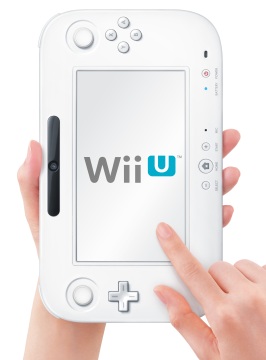
For some unknown reason, the menus are pretty slow to load up. You can zip around the home screen no problem, but when you access an “app”, they seem to be slow to load, and the same is true for exiting a game (or app) back to the main Home menu. This will no doubt be a common complaint from users, so you’d have to assume that, if they can, Nintendo will patch this with a future firmware update.
A nice touch is the ability to transfer your 3DS Mii to your Wii U console. Just like the first set up, it’s quick, easy and painless. Nintendo may be going for the hardcore in terms of third-party support, but they haven’t made wholesale UI changes, they haven’t left their own core behind with confusing menus and awkward interface options.
You don’t want to know about that, you want to know about that new-fangled Gamepad. It’s smaller than you’d think from pictures, and it’s a hell of a lot lighter than it has any right to be, yet somehow it still looks and feels expensive, classy even. I’ve spent entire afternoons with the device in my hand and it never felt uncomfortable, which yet again proves that when Nintendo put their collective minds to a controller, there’s none finer in the design department. Battery life is somewhere around the three hour mark, with the Gamepad usually conking out just after, or sometimes before. The Gamepad is charged by a separate AC adapter, and the jokes about the Premium bundle including a cradle for the Gamepad are unfounded, it’s nice to have and useful for charging purposes, as like the 3DS, the AC plugs into the cradle itself. Charging is relatively quick, and of course, if you want to, you can play on whilst it charges.
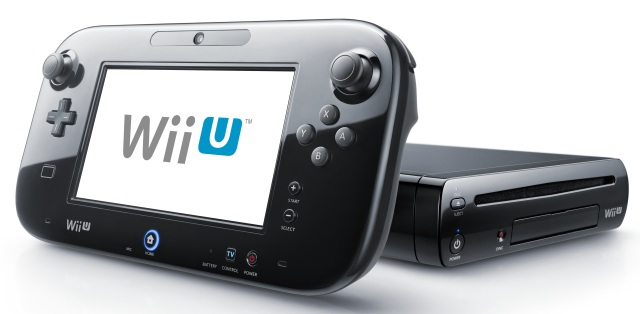
There’s a reason that so much time has been spent talking about the Gamepad on Nintendo’s part, because it really is the star of the show. As well as a camera, microphone and all the buttons, there’s also a sensor bar built into the Gamepad, meaning you can put it on a stand and happily use existing Wii Remotes to play a game, using the Gamepad as the TV. It never gets old, and it never stops impressing. UK gamers will be happy to hear that although the Gamepad can control your TV (volume, channel, power on/off), it can also control your Sky HD box, meaning that it can actually become the universal remote for the home. Dreams of playing video games on the toilet, however, were dashed for me when discovering the range for the Gamepad was rather poor in my house. At first the game will start to display latency on the gamepad, before cutting out completely and warning the player that they are out of range. Interesting to note here though, is that I have a lot of devices firing signals around the home at some point, so your mileage may vary. Another thing of note is that, if you want it to, you could take the Wii U on the road. If you power the console via your car’s power ports, you could happily play certain games that are playable on the Gamepad without needing a TV. The Wii U is small and reasonably portable, so it’s an option for long car trips, which is fantastic.
There are issues, connectivity wise, some games require motion plus, some don’t, some allow Pro Controller support, some don’t. A real lack of a unified controller scheme throughout all games is odd, yet slightly understandable. Take Nintendo Land as an example, some of the activities only require the Gamepad and Wii Remote, others (Zelda, for example) require motion plus. It’s fiddly and awkward and, to be honest, pretty expensive if you fancy a five player session. Worse yet, games like New Super Mario Bros. 2 have no Pro Controller support, which is inexcusable and genuinely baffling. Multiplayer Mario U doesn’t require any motion plus, it requires a D-Pad/Stick and 3 buttons, why on earth can’t you play it with a Pro Controller? It could be patched, and is a software issue, not a hardware one, but it’s indicative of the unification problems across the device, which brings us nicely onto the Online system, Nintendo Network.
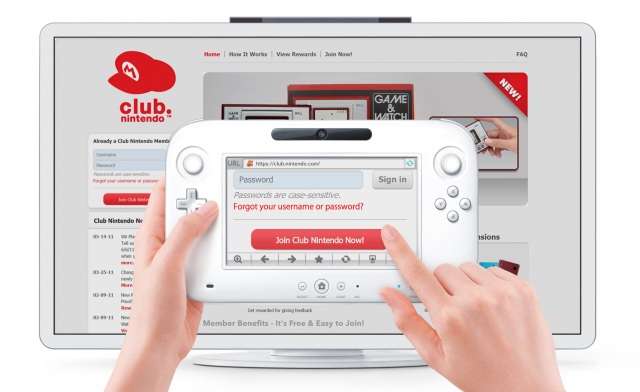
When you update the console on day one (it’ll take roughly an hour or more, depending on connection speed, as it’s fairly hefty , adding a lot of new features) you’ll gain access to the Miiverse, which is best thought of as an internet message board for like minded people. You’ll be able to post comments, pictures and whatever you want. It’s fairly heavily moderated, and within 20 minutes of adding my position here at GodisaGeek.com to my profile, I had received warning that it was inappropriate (I’m assuming the “God” part of if) and that I had to change it, or have my profile as non-public. Miiverse is as colourful as the rest of the console’s features, charming to look at, and it’ll be really interesting to see how communities take to the feature, as different levels of gamer are accommodated depending on a skill level that the player themselves chooses.
The friends list is easily accessed from either the Wii U home screen, or by hitting the Home button on the Gamepad. It’s simple and far more intuitive than anything that Nintendo have done before. You simply type in the name of the friend you wish to find (via their Nintendo Network Name) and you’re pretty much set, once they approve you of course. Like most services, you can tell the Wii U what you want to display, for example, what you are playing right now. Game updates seem to take a fair while, but given that we don’t know how much data was downloaded, it’s hard to be super critical but fifteen minutes for a Nintendo Land update seemed a lot, then it has to install the update too, which took another 3-4 minutes.
Something that is a surprise was how good the eShop looks. It’s incredibly simple to navigate, and you can even link your Nintendo Network account to your existing VIP club membership, if you fancy it. Games are reasonably priced, with the usual digital inflation (for example, FIFA 13 is £49.99, ZombiU is £54.99) on certain titles, whilst download titles like Trine 2 are reasonable, at just over the £10 mark. Overall the Nintendo Network experience is one that is easy on the eyes and fairly unique, but still needs a little work. Navigating from one area to another means more loading screens, but again, hopefully this will be updated via a future firmware release. The browser works as it should, but TVii isn’t yet available at the time of writing. When all is said and done, the Wii U is leap and bounds ahead of the Wii in terms of online, but let’s face it, that wasn’t hard. One of the best things about all of the online featuresis that you don’t even have to leave your game to access them. Even with the eShop you can buy and download a game, then just go back to playing the software you were previously playing. Lessons have been learned.
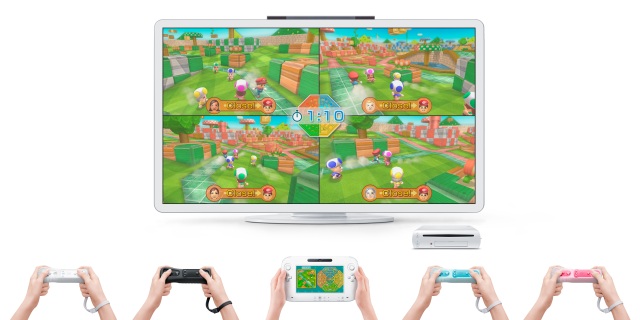
Backwards compatibility with the Wii is available, but you’ll reboot the Wii U into Wii mode, in order to experience the previous console. You can transfer existing Wii content to the Wii U but it’s a bit fiddly, involving both machines and multiple switches between the two, with SD cards. In honestly, there’s a chance that a lot of people probably won’t even bother. The Wii Shop is not the same as the eShop, so although you can access the Wii Shop from the Wii-mode, the balances aren’t the same thing, so you can’t buy eShop games for your Wii U with points you had sitting on your Wii console. It’s yet more divisive branding, Nintendo really do need to work on unifying all these accounts and stores somehow, and quickly.
VERDICT: So should you buy a Wii U? When all is said and done, the Wii U is a massive step up from the Wii, and never underestimate what a bump in visual fidelity can do for a console. Mario looks fantastic, and you know that his stable-mates will be coming at some point, Nintendo would be mad not to use them. The Gamepad offers users an entirely new opportunity; to never stop playing. It may sound a little silly, but the ability to just keep playing a console game when the TV is required elsewhere is a huge feature, and one that is undeniably cool. As long as the technology isn’t used in just that way, and the Gamepad becomes a de facto handheld, then the future could be rosy.
So long as Nintendo don’t rest on their laurels, and as long as third-party support continues and innovation keeps coming, the Wii U is a fantastic bit of kit. It has enough wow factor and support from all parties to keep early adopters happy for a long time, and with games like Rayman Legends and Pikmin on the horizon, you already know you want the console. Exclusives like ZombiU seemed impossible once, but third-parties believe in the hardware, so jump on board and smile from ear to ear, because Nintendo excel at delighting their audience, and still do.


